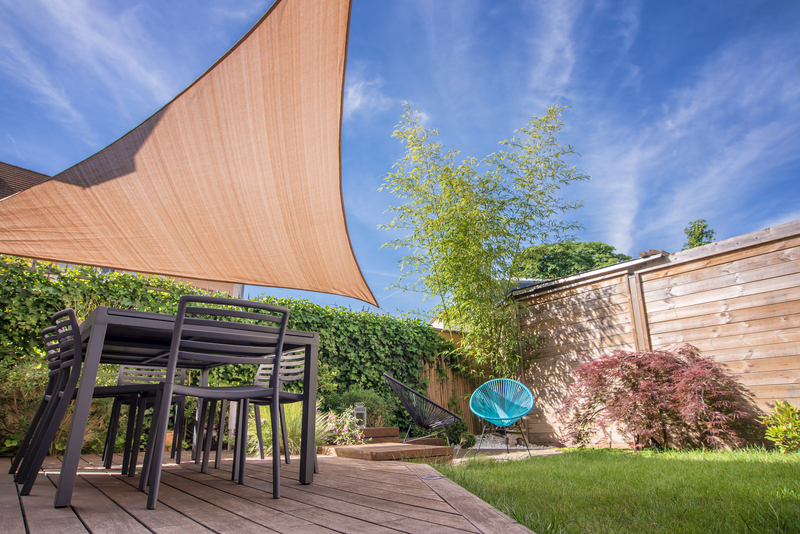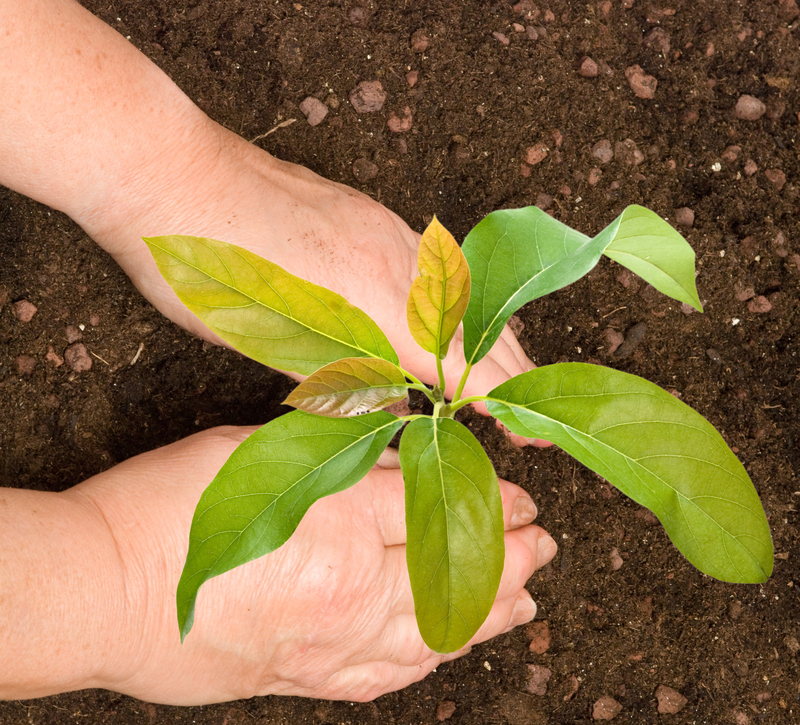Craft a beautiful herb garden that delights the senses
Posted on 23/09/2025
Craft a Beautiful Herb Garden That Delights the Senses
Imagine stepping into your backyard and being instantly greeted by a lush tapestry of vibrant colors, intoxicating scents, and the gentle brush of soft, textured leaves beneath your fingers. Crafting a beautiful herb garden that delights the senses is not just about growing useful plants--it's about creating a sensory retreat that tantalizes your sight, smell, taste, touch, and even sound. Whether you have a bountiful yard or a cozy balcony, with thoughtful planning and a touch of creativity, you can weave nature's magic right at your doorstep.
Why Grow a Sensory Herb Garden?
Herb gardens offer more than culinary rewards. They provide a multi-sensory experience that soothes the mind, nurtures well-being, and becomes a haven for pollinators. By cultivating a beautiful herb garden, you invite nature's fragrances, flavors, and textures into your daily life. Here are just a few reasons to create your own fragrant sanctuary:
- Aromatherapy: Herbs like lavender and mint release mood-boosting scents.
- Culinary Delights: Fresh parsley, basil, and rosemary elevate home-cooked meals.
- Pollinator Paradise: Blossoming herbs draw bees, butterflies, and beneficial insects.
- Aesthetic Appeal: Colorful leaves and flowers create a visually stunning landscape.
- Wellbeing: Gardening reduces stress and encourages time outdoors.
Let's explore how you can create a sensory herb garden that enchants you year-round.

Designing Your Sensory Herb Garden
Step 1: Choose the Perfect Location
The first step in crafting a beautiful herb garden is selecting the right spot. Most herbs thrive in sunny locations, requiring at least 6 hours of direct sunlight. Ensure your chosen area has excellent drainage, which is crucial for most aromatic herbs. Whether you're planting in the ground, raised beds, or stylish containers, a sun-kissed spot close to your kitchen offers both convenience and optimal growing conditions.
Step 2: Select a Delightful Array of Herbs
For a garden that appeals to every sense, select a variety of herbs based on their fragrance, flavor, texture, appearance, and even the sounds they evoke when rustled by the breeze. Here are some must-have herbs for your fragrant herb garden:
- Lavender: Renowned for its soothing scent and purple blooms.
- Basil: A kitchen staple with glossy leaves and a rich aroma.
- Mint: Refreshing scent; choose from varieties like spearmint or peppermint.
- Rosemary: Pine-scented needles and lovely blue flowers.
- Thyme: Petite leaves, earthy aroma, and delicate flowers.
- Oregano: Robust flavor, attractive white or pink clusters.
- Lemon Balm: Citrusy scent that repels insects.
- Chives: Onion fragrance and edible purple blossoms.
- Sage: Silvery, fuzzy leaves perfect for tactile exploration.
- Coriander/Cilantro: Two-in-one herb with aromatic leaves and seeds.
Combine culinary, medicinal, and ornamental herbs to bring diversity and delight to your garden.
Step 3: Plan Your Garden Layout
A visually appealing, beautiful herb garden is all about design. Use curves, raised beds, or container arrangements to add structure. Organize herbs by height, fragrance, or color:
- Fragrant Border: Line pathways with lavender, thyme, or basil to release scents as you brush past.
- Color Patches: Alternate green, purple, and gray-foliaged herbs for striking contrasts.
- Textural Interest: Mix feathery dill, fuzzy sage, and succulent rosemary for layers of touchable interest.
Place taller varieties like rosemary and sage at the back, and low-growers such as thyme and creeping oregano at the edge.
Step 4: Enhance Accessibility & Flow
Create winding paths, stepping stones, or a central focal point--perhaps a decorative bench, birdbath, or a sun dial. Easy access encourages daily enjoyment and fuss-free harvesting. Use raised beds or containers if bending is difficult, or if you have limited space.
The Senses in Herb Gardening
1. Sight: Beauty in Every View
Transform your herb garden into a visual feast with a mix of foliage colors, flower shapes, and garden art. Group purple basil with silvery sage, soft green mint, or variegated lemon thyme for eye-catching harmony. Edging gardens with marigolds or nasturtiums adds additional color and attracts pollinators.
2. Smell: The Fragrant Symphony
Herbs are the perfumers of the garden. Position aromatic varieties where you'll brush past them, releasing scents that uplift the spirit. Plant lavender by seats or doorways, mint near outdoor dining areas, and rosemary along garden paths.
3. Taste: Fresh Flavors at Your Fingertips
Few pleasures match snipping fresh herbs for your kitchen creations. A flavorful herb garden ensures you have a ready supply of basil for pesto, thyme for roasts, and mint for teas or desserts.
4. Touch: Gardening as a Tactile Experience
A sensory herb garden is also about touch. Sage's fuzzy leaves, parsley's crinkly lobes, and chives' tubular stems invite fingers to explore. Texture variation not only delights but also teaches children about plant diversity.
5. Sound: Nature's Whisper
Some herbs, such as fennel or dill, rustle when swayed by wind, while bees and butterflies bring soft buzzing and fluttering. Water features or wind chimes further enhance the tranquil soundscape of your herbal haven.
Essential Tips for a Thriving, Sensory Herb Garden
Soil Preparation
Well-drained, fertile soil is key. Enrich your garden loam with compost or aged manure to provide nutrients. If your soil is heavy, consider raised beds or large pots filled with a high-quality potting mix.
Watering Wisely
- Most herbs need consistent moisture, especially during establishment.
- Avoid overwatering; soggy roots lead to rot. Allow the soil to dry slightly between waterings.
- Mediterranean herbs like thyme, oregano, and rosemary prefer drier conditions.
Feeding and Mulching
Feed your herb garden sparingly. Overfeeding produces lush leaves but weaker flavor. An annual application of compost or a balanced organic fertilizer is usually sufficient. Mulch with straw or bark to conserve moisture and deter weeds.
Companion Planting
Harness nature's synergy! Many herbs repel pests and enhance each other's growth:
- Basil and tomatoes are classic companions.
- Chives deter aphids from roses.
- Mint repels ants but should be grown in containers to contain its spread.
Routine Care and Harvesting
Pinch and prune herbs regularly to encourage bushy growth and prevent flowering, which can reduce leaf flavor. Harvest herbs in the morning when their oils are most concentrated, and always leave enough foliage for the plants to thrive.
Creative Ideas to Elevate Your Herb Garden
Themed Herb Gardens
- Mediterranean Retreat: Plant rosemary, oregano, lavender, and thyme for a drought-tolerant, sun-loving haven.
- Culinary Corner: Focus on kitchen essentials--parsley, basil, chives, dill, mint, and sage.
- Tea Garden: Create a peaceful nook with lemon balm, chamomile, mint, and calendula.
- Pollinator Paradise: Combine flowering herbs like borage, chives, fennel, and thyme to support bees and butterflies.
Upcycle for Style and Sustainability
Upcycled containers--such as vintage teacups, wooden crates, or old boots--add personality and sustainability to your beautiful herb garden. Vertical gardens, wall-mounted planters, and hanging baskets maximize small spaces and make harvesting a breeze.
Enhance with Decor
- Install whimsical signage to label your herbs.
- Add a small water fountain or birdbath to attract wildlife.
- Incorporate benches, trellises, or garden ornaments for extra charm.
Herb Garden Design for Small Spaces
Balconies and Patios
You don't need a sprawling yard to craft a beautiful herb garden. Herbs flourish in containers or window boxes on sunny balconies and patios. Group containers by height and color for visual interest. Choose compact varieties like dwarf basil, oregano, and parsley for smaller pots.
Windowsills and Indoors
Indoor herb gardens are perfect for city dwellers. Use small pots, hanging planters, or even vertical wall gardens to grow basil, chives, and mint by your kitchen window. Ensure herbs receive at least 6 hours of sunlight daily, or supplement with a grow light.
Integrating Herbs into Existing Gardens
Herbs blend beautifully with other garden elements. Add fragrant herbs to borders, around fruit trees, or in ornamental beds. Many herbs deter pests naturally, reducing your need for chemicals. The soft aroma of lavender alongside roses, or parsley at the foot of peonies, brings texture and scent to traditional flower gardens.
Seasonal Care and Harvesting Tips
- Spring: Sow seeds or plant young herbs after the frost. Prune established plants to encourage new growth.
- Summer: Water consistently, especially during heat waves. Harvest leaves regularly for best flavor.
- Autumn: Cut back perennials before winter. Pot up annuals or bring tender varieties indoors.
- Winter: Mulch outdoor perennials or overwinter herbs like rosemary inside, near a sunny window.
Caring for Pollinators in Your Herb Garden
Support pollinators by choosing herbs that flower generously, such as thyme, oregano, chives, and borage. Avoid chemical pesticides and let some herbs go to seed for bees, butterflies, and beneficial insects. Provide a small dish of water or shallow stones for thirsty pollinators.

Frequently Asked Questions
Can I grow a beautiful herb garden indoors?
Absolutely! Many herbs, such as basil, mint, chives, and parsley, thrive on sunny windowsills or under grow lights. Ensure pots have drainage and never let them sit in water.
What are the easiest herbs for beginners?
Try mint (in containers), chives, thyme, and basil. These are hardy, productive, and forgiving for those new to herb gardening.
How often should I water my herb garden?
Water when the top inch of soil feels dry; Mediterranean herbs need less frequent watering than leafy herbs like basil.
Conclusion: Create Your Sensory Sanctuary
Creating a beautiful herb garden that delights the senses is a rewarding journey. By thoughtfully selecting herbs for fragrance, flavor, texture, and color, you'll cultivate an oasis that nourishes body, mind, and spirit. Whether you have a sunlit corner, a city balcony, or a spacious plot, herb gardening invites nature's magic into everyday life.
- Start small or go grand--let your imagination shape your herbal retreat.
- Celebrate every new sprout, blossom, and harvest as your garden grows.
- Share the abundance with friends, family, and pollinators alike.
Begin your sensory herb garden journey today, and delight in the colors, scents, and flavors of your personal paradise!

